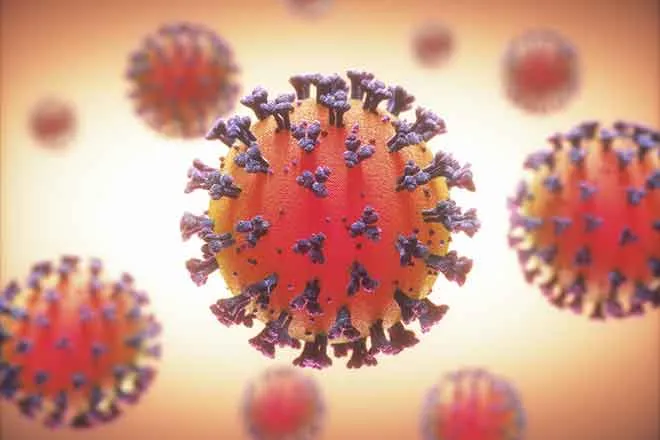
Is intermittent fasting the diet for you? Here’s what the science says

McKale Montgomery, Oklahoma State University
What if I told you all you need to do to lose weight is read a calendar and tell time? These are the basics for successfully following an intermittent fasting diet.
Can it be that simple, though? Does it work? And what is the scientific basis for fasting? As a registered dietitian and expert in human nutrition and metabolism, I am frequently asked such questions.
Simply stated, intermittent fasting is defined by alternating set periods of fasting with periods in which eating is permitted. One method is alternate-day fasting. On “fast days,” followers of this form of fasting are restricted to consuming no more than 500 calories per day; on “feast days,” which occur every other day, they can eat freely, with no restrictions on the types or quantities of foods eaten.
Other methods include the increasingly popular 5:2 method. This form of fasting involves five days of feasting and two days of fasting per week.
Another variation relies on time-restricted eating. That means followers should fast for a specified number of hours – typically 16 to 20 per day – while freely consuming foods within a designated four- to eight-hour period.
But what about eating breakfast and then small meals throughout the day to keep the body’s metabolism running? After all, that’s the conventional wisdom that many of us grew up with.
To answer these questions, it helps to understand the basics of human metabolism.
Human metabolism 101
The human body requires a continual supply of energy to sustain life, and the foods we eat provide us with this energy. But because eating is often followed by periods of time without eating, an intricate set of biological pathways is in place to meet the body’s energy demands between meals.
Most of the pathways function at some level all the time, but they fluctuate following a meal in a predictable pattern called the fed-fast cycle. The time frames of the cycle can vary, depending on the food types eaten, the size of the meal and the person’s activity level.
So what happens, metabolically speaking, after we eat? Consuming carbohydrates and fats leads to a rise in blood glucose and also lipid levels, which include cholesterol and triglycerides.
This triggers the release of insulin from the pancreas. The insulin helps tissues throughout the body take up the glucose and lipids, which supplies the tissues with energy.
Once energy needs are met, leftover glucose is stored in the liver and skeletal muscle in a condensed form called glycogen. When glycogen stores are full, excess glucose converts to fatty acids and is stored in fat tissue.
About three to 18 hours after a meal – again, depending upon a person’s activity level and size the of the meal – the amount of circulating blood glucose and lipids returns to baseline levels. So tissues then must rely on fuel sources already in the body, which are the glycogen and fat. A hormone called glucagon, secreted by the pancreas, helps facilitate the breakdown of glycogen and fat to provide energy for the body between meals.
Glucagon also initiates a process known as gluconeogenesis, which is the synthesis of glucose from nondietary sources. This helps maintain the right level of blood glucose levels.
When the body reaches a true fasting state – about 18 hours to two days without additional food intake – the body’s stores of glycogen are depleted, and tissues like the heart and skeletal muscle start to rely heavily on fats for energy. That means an increase in the breakdown of the stored fats.
“Aha!” you might say. “So intermittent fasting is the key to ultimate fat burning?” Well, it’s not that simple. Let’s go through what happens next.
The starvation state
Though many tissues adapt to using fats for energy, the brain and red blood cells need a continual supply of glucose. But when glucose is not available because of fasting, the body starts to break down its own proteins and converts them to glucose instead. However, because proteins are also critical for supporting essential bodily functions, this is not a sustainable process.
When the body enters the starvation state, the body goes into self-preservation mode, and a metabolic shift occurs in an effort to spare body protein. The body continues to synthesize glucose for those cells and tissue that absolutely need it, but the breakdown of stored fats increases as well to provide energy for tissues such as the skeletal muscle, heart, liver and kidneys.
This also promotes ketogenesis, or the formation of ketone bodies – molecules produced in the liver as an energy source when glucose is not available. In the starvation state, ketone bodies are important energy sources, because the body is not capable of solely utilizing fat for energy. This is why it is inaccurate when some proponents of intermittent fasting claim that fasting is a way of burning “just fat” - it’s not biologically possible.
What happens when you break the fast? The cycle starts over. Blood glucose and lipids return to basal levels, and energy levels in the body are seamlessly maintained by transitioning between the metabolic pathways described earlier. The neat thing is, we don’t even have to think about it. The body is well-equipped to adapt between periods of feasting and fasting.
Possible downsides
If an “all-or-nothing” dietary approach to weight loss sounds appealing to you, chances are it just might work. Indeed, intermittent fasting diets have produced clinically significant amounts of weight loss. Intermittent fasting may also reduce disease risk by lowering blood pressure and blood lipid levels.
On the flip side, numerous studies have shown that the weight reduction from intermittent fasting diets is no greater than the weight loss on a standard calorie-restricted diet.
In fact, the weight loss caused by intermittent fasting is due not to spending time in some sort of magic metabolic window, but rather to reduced overall calorie consumption. On feast days, dieters do not typically fully compensate for lack of food on fasted days. This is what results in mild to moderate weight loss. Approximately 75% of the weight is fat mass; the rest is lean mass. That’s about the same ratio as a standard low-calorie diet.
Should you still want to go forward with intermittent fasting, keep a few things to keep in mind. First, there are no studies on the long-term safety and efficacy of following this type of diet. Second, studies show that intermittent fasters don’t get enough of certain nutrients.
Exercise is something else to consider. It helps preserve lean muscle mass and may also contribute to increased weight loss and long-term weight maintenance. This is important, because nearly a quarter of the weight lost on any diet is muscle tissue, and the efficacy of intermittent fasting for weight loss has been demonstrated for only short durations.
Also, once you stop following an intermittent-fasting diet, you will very likely gain the weight back. This is a critical consideration, because many people find the diet difficult to follow long-term. Imagine the challenge of planning six months’ worth of feasting and fasting around family dinners, holidays and parties. Then imagine doing it for a lifetime.
Ultimately, the best approach is to follow an eating plan that meets current dietary recommendations and fits into your lifestyle.![]()
McKale Montgomery, Assistant Professor of Nutritional Sciences, Oklahoma State University
This article is republished from The Conversation under a Creative Commons license. Read the original article.

















